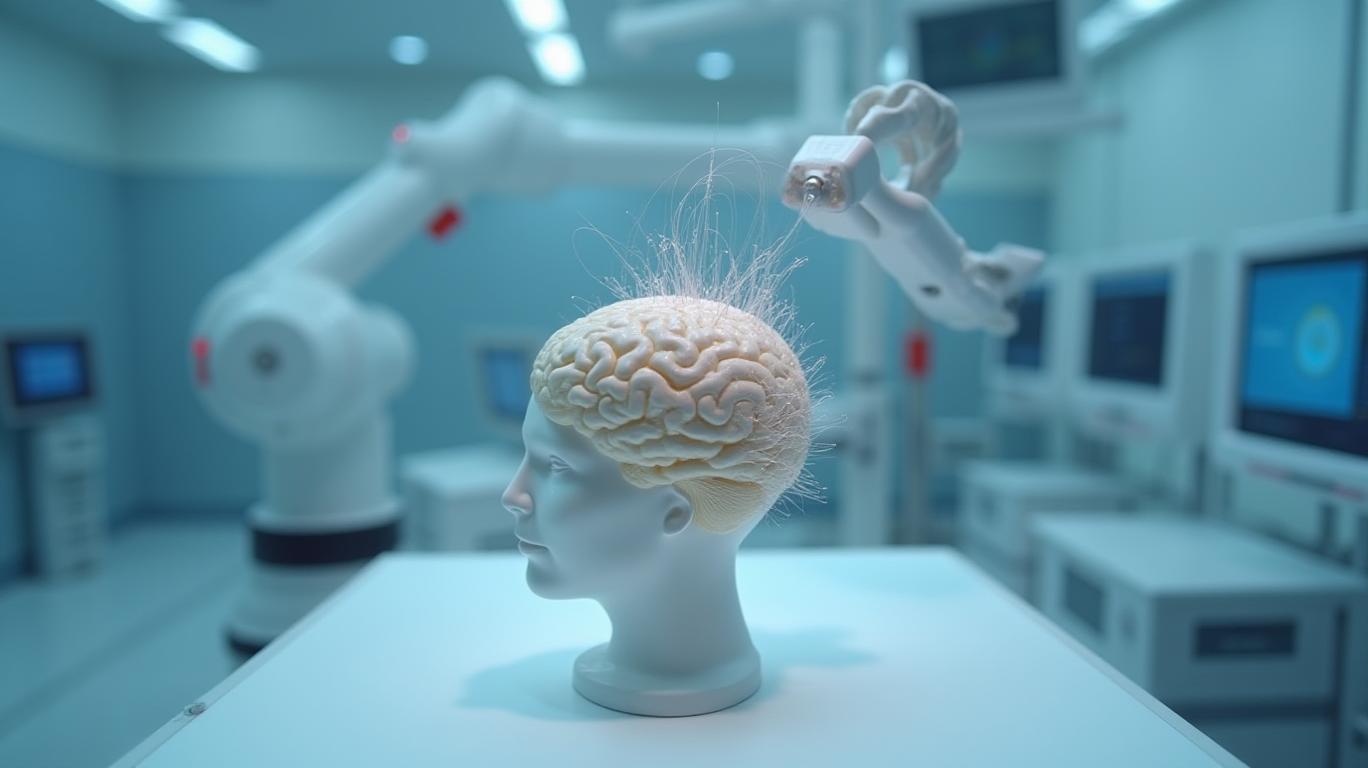AInvest Newsletter
Daily stocks & crypto headlines, free to your inbox
The third human recipient of Neuralink’s brain-computer interface (BCI) recently shared a video demonstrating real-time control of a computer cursor and AI-generated speech—marking a pivotal moment in the company’s mission to merge human
with technology. This milestone, paired with global expansion of clinical trials and a $500 million funding round, has investors and experts alike re-evaluating Neuralink’s potential to revolutionize healthcare and redefine human capability.
Brad Smith, a non-verbal ALS patient, became the first BCI recipient to edit a video using only his brainwaves. The footage, shared on April 22, 2025, showcased Smith navigating a computer cursor and generating speech through AI, tasks previously impossible for him. “I am typing this with my brain,” he stated, highlighting the BCI’s transformative impact on his autonomy.
This achievement underscores Neuralink’s progress in addressing severe mobility limitations. Unlike prior technologies like eye-trackers, the BCI allows outdoor use and real-time interaction, enabling patients to reconnect with loved ones and reclaim independence.
The PRIME clinical trial, which focuses on digital device control, now includes three participants, with plans to expand enrollment to 20–30 patients by year-end. Meanwhile, the CONVOY study—testing BCI control of robotic arms—aims to restore physical mobility, a potential game-changer for paralyzed individuals.
Neuralink’s $500 million funding round, targeting an $8.5 billion pre-money valuation, signals investor confidence in its technology. This capital will accelerate clinical trials, refine the N1 implant’s hardware (1,024 electrodes distributed across 64 threads), and expand global operations. By late 2025, the company plans to open a second PRIME trial site in Miami, Florida, complementing its Phoenix, Arizona, headquarters.
Elon Musk has set an ambitious target: implanting over 1,000 humans by 2026. While this goal hinges on FDA approvals and regulatory buy-in, the recent Blindsight vision-restoration initiative—which aims for human trials by year-end—adds another layer of potential.
Despite progress, Neuralink faces hurdles. The FDA’s Breakthrough Device Designation for Blindsight fast-tracks trials, but pivotal studies requiring 20–40 patients may stretch into 2026. Meanwhile, scrutiny over past animal testing practices and SEC investigations into Musk’s public pronouncements loom as risks.
Competitors like Synchron (vascular BCI) and BlackRock Neurotech are also advancing clinical trials, intensifying market competition. For investors, the question remains: Is Neuralink’s vision of “superhuman” capabilities—such as infrared vision or robotic limb control—feasible, or will it falter under technical and ethical constraints?
Neuralink’s recent milestones—patient success stories, global trial expansion, and robust funding—paint a compelling picture of its potential. The $8.5 billion valuation reflects investor optimism, but scalability and regulatory approval are critical.
Consider this: The global BCI market is projected to reach $2.7 billion by 2027 (per Grand View Research), driven by neurological disorder treatments. Neuralink’s focus on paralysis and sensory restoration aligns with this growth, but it must navigate FDA requirements and public trust.
For investors, Neuralink represents a bet on transformative technology—akin to early-stage biotech or AI ventures. While risks are substantial, the payoff could redefine healthcare. As Musk’s vision moves from concept to clinic, the next 12–18 months will determine whether Neuralink’s BCI becomes a tool for healing or a cautionary tale of ambition outpacing reality.
In short: Neuralink’s future hinges on execution. For now, its progress—embodied by patients like Brad Smith—offers hope, and a roadmap for investors to follow.
Tracking the pulse of global finance, one headline at a time.

Dec.15 2025

Dec.14 2025

Dec.14 2025

Dec.14 2025

Dec.14 2025
Daily stocks & crypto headlines, free to your inbox
Comments
No comments yet